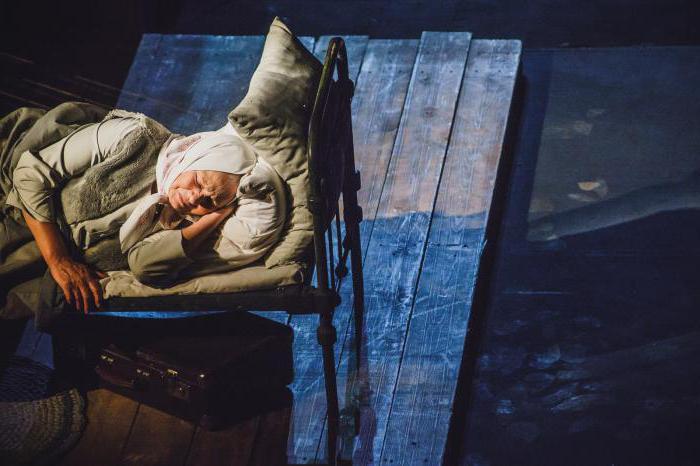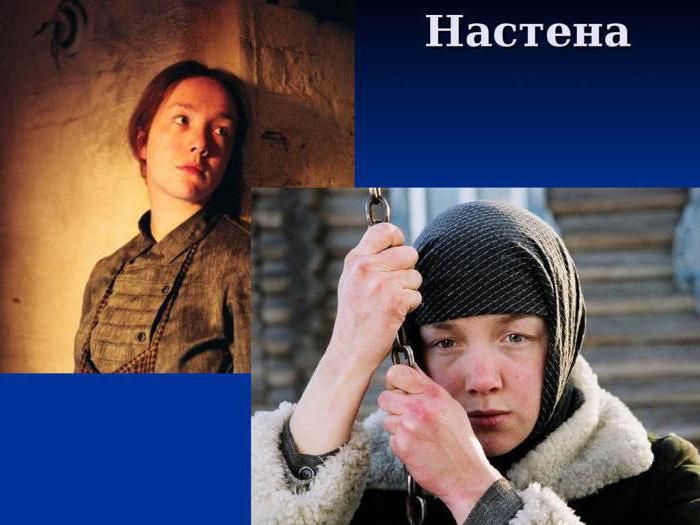The works of Rasputin are known and loved by many. Rasputin Valentin Grigoryevich - Russian writer, one of the most famous representatives of "village prose" in literature. The acuteness and drama of ethical problems, the desire to find support in the world of peasant folk morality were reflected in his stories and stories dedicated to contemporary rural life. In this article we will talk about the main works created by this talented writer.
“Money for Mary”
This story was created in 1967. It was from her that Rasputin (his photo is presented above) entered literature as an original writer. The story "Money for Mary" brought the author wide fame. In this work, the main themes of his further work were outlined: being and life, a man among people. Valentin Grigoryevich considers such moral categories as cruelty and mercy, material and spiritual, good and evil.
Rasputin raises the question of how much other people are affected by someone else's grief. Is anyone able to refuse a person in trouble and leave him to die without financial support? How can these people after failure be able to calm their conscience? Maria, the protagonist of the work, suffers not only from the discovered shortage, but, possibly, to a greater extent from the indifference of people. After all, yesterday they were good friends.
The tale of a dying old woman
The main character of Rasputin’s novel “Deadline”, created in 1970, is the dying old woman Anna, who recalls her life. A woman feels that she is involved in the cycle of being. Anna experiences the mystery of death, perceiving it as the main event in human life.
Four children are opposed to this heroine. They came to say goodbye to their mother, to take her on her last journey. Anna's children are forced to stay with her for 3 days. It was at this time that God delayed the departure of the old woman. The preoccupation of children with everyday worries, their vanity and fussiness, is in sharp contrast with the spiritual work that takes place in the dying consciousness of the peasant woman. The composition of the story includes large layers of text, reflecting the experiences and thoughts of the characters of the work, and above all Anna.
Main themes
The topics that the author touches on are more multifaceted and deep-seated than might seem during a fluent reading. The attitude of children to parents, the relationship between different family members, old age, alcoholism, the concepts of honor and conscience - all these motives in the novel “The Last Term” are woven into a single whole. The main thing that interests the author is the problem of the meaning of human life.
The inner world of eighty-year-old old Anna is filled with worries and worries about children. All of them have already left for a long time and live separately from each other. The main character only wants to see them for the last time. However, her children, already grown up, are busy and business representatives of modern civilization. Each of them has their own family. They all think of many different things. They have enough strength and time for everything except their mother. For some reason, they almost never remember her. And Anna only lives thoughts of them.

When a woman senses the approach of death, she is ready to suffer a few more days just to see her family. However, children find time and attention for the old woman only for the sake of decency. Valentin Rasputin shows their lives as if they generally live on earth for the sake of decency. Anna's sons are mired in drunkenness, while the daughters are completely absorbed in their “important” deeds. All of them are insincere and absurd in their desire to devote some time to the dying mother. The author shows us their moral decline, selfishness, heartlessness, callousness, which took possession of their souls and lives. Why do such people live ? Their existence is bleak and unspiritual.
At first glance it seems that the last date is the last days of Anna. However, in fact, this is the last chance for her children to fix something, to conduct their mother with dignity. Unfortunately, they were not able to use this chance.
The tale of a deserter and his wife
The work analyzed above is an elegiac prologue to the tragedy captured in the story entitled “Live and Remember,” created in 1974. If the old woman Anna and her children gather under her father’s roof in the last days of her life, then Andrei Guskov, who deserted from the army, is cut off from the world.
Note that the events that are described in the story "Live and Remember" take place at the end of World War II. The symbol of the hopeless loneliness of Andrei Guskov, his moral savagery is a wolf hole located on an island in the middle of the Angara River. The hero is hiding in it from people and authorities.
Tragedy of the Wall
This hero’s wife is Nastena. This woman secretly visits her husband. Every time she needs to cross the river to meet him. It’s not by chance that Nastena overcomes the water barrier, because in myths she separates two worlds from each other - the living and the dead. Nastena is a truly tragic heroine. Valentin Grigoryevich Rasputin confronts this woman with a difficult choice between love for her husband (Nastena and Andrei are married in the church) and the need to live among people in the world. In no one person can a heroine find either support or sympathy.

The surrounding village life is no longer an integral peasant cosmos, harmonious and closed within its borders. The symbol of this cosmos, by the way, is Anna’s hut from the work “Deadline”. Nastena commits suicide, taking with him into the river the child Andrei, whom she wanted so much and whom she conceived with her husband in his wolf den. Their death becomes the atonement of the deserter, but she is not able to return to this hero a human appearance.
The story of the flooding of the village
The themes of parting with entire generations of people who lived and worked on their land, the topics of farewell to the world of the righteous, with their ancestor mother are already being heard in The Deadline. In the story “Farewell to Mater”, created in 1976, they are transformed into a myth about the death of the peasant world. This work tells about the flooding of a Siberian village located on the island as a result of the creation of a “man-made sea”. The island of Matera (from the word "mainland"), in contrast to the island depicted in "Live and Remember," is a symbol of the promised land. This is the last refuge for those living in conscience, in harmony with nature and God.
The main characters of “Farewell to Mater”
At the head of the old women who live their days here is the righteous Daria. These women refuse to leave the island, move to a new village, symbolizing a new world. The old women portrayed by Valentin Grigorievich Rasputin remain here until the very end, until the death hour. They guard their shrines - the pagan Tree of Life (royal foliage) and the cemetery with crosses. Only one of the settlers (named Pavel) comes to visit Daria. He is driven by a vague hope of joining the true meaning of being. This hero, in contrast to Nastena, floats into the world of the living from the world of the dead, which is a mechanical civilization. However, the world of the living in the story “Farewell to Mater” dies. On the island in the finale of the work, only its Master remains - a mythical character. His desperate cry, which is heard in a dead void, completes the story of Rasputin.
"Fire"
In 1985, nine years after the creation of Farewell to Matera, Valentin Grigoryevich decided to write again about the death of the communal world. This time he dies not in water, but in a fire. The fire covers warehouses located in the Lespromkhoz settlement. In the work, a fire breaks out on the site of a previously flooded village, which has a symbolic meaning. People are not ready for a joint struggle with disaster. Instead, they, one by one, competing with each other, begin to take away the good snatched from the fire.
The image of Ivan Petrovich
Ivan Petrovich is the main character of this work of Rasputin. It is from the point of view of this character working as a driver, the author describes everything that happens in warehouses. Ivan Petrovich is no longer a righteous hero typical of Rasputin's work. He is in conflict with himself. Ivan Petrovich seeks and cannot find “the simplicity of the meaning of life”. Therefore, the author’s vision of the world he depicts is disharmonized and complicated. From this follows the aesthetic duality of the style of the work. In “Fire”, the image of burning warehouses, captured by Rasputin in all details, is adjacent to various symbolic and allegorical generalizations, as well as journalistic sketches of the life of a timber industry enterprise.
Finally
We examined only the main works of Rasputin. You can talk about the work of this author for a long time, but it still will not convey the whole originality and artistic value of his novels and stories. The works of Rasputin are certainly worth reading. In them, the reader is presented with a whole world full of interesting discoveries. In addition to the works mentioned above, we recommend that you familiarize yourself with Rasputin's storybook, “A Man from the Other World,” published in 1965. The stories of Valentin Grigorievich are no less interesting than his story.